How to Save for Retirement if Your Employer Doesn’t Offer a 401(k)
Saving for retirement can feel daunting, especially if your employer doesn’t offer a 401(k) plan. Yet even in the absence of this traditional retirement savings vehicle, plenty of other effective strategies and options are available to help you achieve your retirement goals—which is precisely what we'll discuss in this article.
Employer-sponsored 401(k) benefits
An employer-sponsored 401(k) is a retirement savings plan that allows employees to divert a portion of their paycheck into a tax-advantaged investment account. These accounts are an incredibly popular retirement savings vehicle, with about 70 million workers participating in the same as of late 2023.
The appeal of a 401(k) lies in its ability to provide significant tax benefits. Contributions are typically made on a pre-tax basis, meaning the money is deducted from an employee’s gross income pre-tax to ultimately reduce the individual’s taxable income for the year: potentially lowering his/her overall tax bill. Contributions are then invested per a range of options such as mutual funds, stocks, and bonds, chosen by the employee from a selection offered by the plan.
Another factor fueling 401(k) popularity is the potential for employer matching, as many employers offer to match a portion of employee contributions to effectively provide free money toward retirement savings. Finally, a 401(k) offers flexibility with respect to contribution limits; as of 2025, an employee can contribute up to $23,500 (with those over the age of 50 able to tack on an additional $7,500 and those between the ages of 60 and 63 able to contribute an additional $11,250).
Employer-sponsored 401(k) alternatives
While 401(k)s are popular, not everyone has access to one—whether they work for a small business, are self-employed, or simply don’t have an employer who offers one. The good news, however, is that plenty of alternatives exist such as the following nine options we’ll examine in relation to a 401(k) plan:
IRA
Roth IRA
Spousal IRA
Solo 401(k)
SEP IRA
SIMPLE IRA
HSA
Cash and Securities
Annuities
Traditional IRA
An individual retirement account (IRA) is a widely recognized alternative to an employer-sponsored 401(k). With a traditional IRA, contributions are typically tax-deductible—meaning you can reduce your taxable income in the year you make the contribution—and the money in the account then grows tax-deferred, requiring you only pay taxes when you withdraw funds during retirement. This is often particularly beneficial if you expect to occupy a lower tax bracket during your retirement years. Additionally, because IRAs aren't tied to an employer, they provide a consistent and reliable retirement savings option regardless of your employment status.
One major disadvantage of an IRA, however, is its lower contribution limit: $7,000 in 2025 ($8,000 for those aged 50+), which is significantly lower than the $23,500 401(k) limit. This may require you explore additional savings vehicles if you wish to maximize your retirement contributions.
Roth IRA
A Roth IRA is similar to its traditional counterpart, but contributions are made with after-tax dollars meaning they don't reduce your taxable income in the year they're made.
One significant advantage of a Roth IRA, however, is that you can withdraw both contributions and any earnings tax-free during retirement (provided certain conditions are met): making this a particularly appealing option for those who expect to occupy a higher tax bracket in the future or value the certainty of tax-free income in retirement.
Unlike a traditional IRA (whereby early withdrawals before age 59½ can trigger penalties and taxes), you can withdraw original Roth IRA contributions at any time without penalty as they've already been taxed: providing additional financial flexibility although it's generally advisable to leave the funds in the account to maximize growth. It's important to note that while you can withdraw contributions in the absence of any penalties, earnings on these are sometimes subject to taxes and penalties if withdrawn before age 59 ½ and the account hasn't existed for at least five years.
For any higher income earners out there, keep in mind that while a Roth IRA has the same contribution limits as a traditional IRA, eligibility is limited by income and thus makes this inaccessible for some.
Spousal IRA
The final type of IRA we’ll discuss is a spousal IRA, which allows working spouses to contribute to retirement accounts on behalf of non-working spouses: enabling both partners to build a retirement nest egg even if only one is employed.
Spousal IRAs are either of the traditional or Roth variety, with a key benefit of the ability to maximize a couple’s retirement savings potential; the working spouse can contribute up to the annual contribution limit on behalf of the non-working spouse, effectively doubling household retirement contributions.
Solo 401(k)
A solo 401(k), also known as an individual 401(k), is a powerful retirement savings tool designed specifically for self-employed individuals and small business owners without employees. This type of retirement plan offers many of the same benefits as a traditional employer-sponsored 401(k) but is tailored to the unique needs of solo entrepreneurs.
On key advantage here is generous contribution limits: up to $70,000 (for 2025) via a combination of employee and employer contributions. Additionally, as solo 401(k)s are either traditional or Roth you can choose the option providing the most anticipated tax advantages. Finally, solo 401(k)s may offer loan provisions allowing you to borrow from your retirement savings under specific conditions to provide liquidity for business or personal expenses.
Eligibility varies for a solo 401(k), however, as this is only available to self-employed individuals or business owners with no full-time employees beyond a spouse; those who have a solo 401(k) and hire employees must therefore transition to a different retirement plan (e.g., a SEP IRA or traditional 401(k) plan). Solo 401(k)s also require more administrative work compared to simpler retirement accounts like IRAs. One example? If plan assets exceed $250,000, you must endure the process of filing an annual Form 5500.
SEP IRA
A SEP IRA, or a simplified employee pension individual retirement account, is another option for self-employed individuals/freelancers as well as businesses with a small number of employees. These are often used to provide retirement benefits to employees in the absence of complexities associated with other types of plans.
SEP IRAs boast high contribution limits (25% of employee compensation, up to a maximum of $70,000 as of 2025) and pre-tax contributions and are relatively easy to establish and administer compared to other retirement plans.
One notable SEP IRA disadvantage is that contributions are made solely by the employer. If you're self-employed, this means you're responsible for making contributions on your own behalf. Beyond this and unlike other retirement plans, SEP IRAs don't allow for employee salary deferrals—meaning you cannot make additional contributions beyond employer contributions. This is often a drawback for those seeking more control over contribution amounts or a retirement plan with employee contribution options.
SIMPLE IRA
A SIMPLE, or savings incentive match plan for employees, IRA is a practical and accessible retirement savings option particularly for small businesses and self-employed individuals.
Employees can contribute up to $16,500 with an additional catch-up contribution of $3,500 allowed for individuals aged 50+ and $5,250 for those between the ages of 60 and 63 (for 2025). Employers, meanwhile, are required to either match employee contributions dollar-for-dollar up to 3% of their compensation or make a non-elective contribution (2% of each eligible employee’s compensation) regardless of employee contributions. SIMPLE IRAs are also easy to establish and have tax advantages similar to those of a traditional IRA, but mandatory employer contributions do exist as a financial commitment for small businesses.
HSAs
HSAs, specifically designed to help individuals save for qualified medical expenses, also offer notable tax advantages and investment opportunities that are often advantageous for retirement planning. For 2025, contribution limits are $4,300 for individuals and $8,550 for families (with an additional $1,000 catch-up contribution allowed for those aged 55+). You can use HSA funds to cover a wide range of qualified medical expenses—including deductibles, co-pays, and some other health-related costs—with unused funds rolling over from year to year, allowing for accumulation and savings growth over time.
One significant HSA advantage is its triple tax benefit; contributions are tax-deductible (reducing your taxable income for the year), earnings and interest on the account grow tax-free, and withdrawals used for qualified medical expenses are also tax-free. This tax-saving trio makes these a powerful tool for managing healthcare costs while also potentially serving as a supplementary retirement savings vehicle.
Another HSA benefit is their flexibility. Unlike some other tax-advantaged accounts, they aren't tied to a specific employer so individuals can retain their account even if they change jobs or retire. Upon reaching age 65, meanwhile, you can withdraw funds for non-medical expenses without facing a penalty—though such withdrawals are subject to ordinary income tax.
One primary HSA limitation is that you must be enrolled in a high-deductible health plan (HDHP) to qualify.
Cash and securities as a 401(k) alternative
While taxable accounts (such as those holding cash and securities) aren't exclusively retirement savings vehicles, you can use them to bolster retirement savings. Cash accounts—including savings accounts, checking accounts, money market accounts, and certificates of deposit (CDs)—are highly liquid, meaning you can access funds quickly without penalty, and come with incredibly low levels of risk. However, their relatively lower interest rates compared to other investment options translates to minimal growth over time (or even a loss of money with respect to purchasing power due to inflation).
On the other hand, accounts invested in assets such as stocks, bonds, mutual funds, and exchange-traded funds (ETFs) offer the potential for higher returns via capital appreciation and dividend income—making them an attractive option for those seeking growth—but come with more risk and volatility. Managing these accounts also requires dedicated attention to investment choices, market trends, and asset allocation, adding a layer of complexity to retirement planning.
As cash and securities accounts don't offer the same tax advantages as retirement accounts (such as 401(k)s, IRAs, or HSAs), neither is a great option alone but instead ideally used to supplement other retirement savings vehicles.
Annuities
An annuity, a financial product issued by an insurance company, provides regular payments in exchange for an upfront lump sum or series of payments. These products—designed to help individuals manage their retirement income and are often a valuable addition to a diversified financial strategy—come in various forms including fixed, variable, and immediate, each offering different features and benefits to suit varying needs and preferences.
One primary advantage of annuities is their ability to provide a predictable income stream; many offer options for guaranteed lifetime payments that provide financial stability and security during retirement, with this guaranteed income especially beneficial for individuals worried about outliving their savings.
Annuities also come with tax advantages including tax-deferred earnings and don't have contribution limits, allowing for substantial investments. Nevertheless, they're also often complex, feature high fees, and lack liquidity.
401(k) alternatives: the takeaway
While employer-sponsored 401(k)s are a popular retirement savings vehicle for a reason, lacking access to one doesn’t mean you're out of luck. To find the best alternative for you, consider working with a financial advisor who can create a personalized retirement savings plan.
Have questions about saving for retirement? Schedule a FREE discovery call with one of our CFP® professionals to get them answered.
———
Vision Retirement is an independent registered advisor (RIA) firm headquartered in Ridgewood, New Jersey. Launched in 2006 to better help people prepare for retirement and feel more confident in their decision-making, our firm’s mission is to provide clients with clarity and guidance so they can enjoy a comfortable and stress-free retirement. To schedule a no-obligation consultation with one of our financial advisors, please click here.
Disclosures:
This document is a summary only and is not intended to provide specific advice or recommendations for any individual or business.
There is no assurance that the techniques and strategies discussed are suitable for all investors or will yield positive outcomes. Investing involves risks including possible loss of principal. Preferred stock dividends are paid at the discretion of the issuing company. Preferred stocks are subject to interest rate and credit risk. As interest rates rise, the price of the preferred stock falls (and vice versa). They may be subject to a call feature with changing interest rates or credit ratings. Dividend payments are not guaranteed and may be reduced or eliminated at any time by the company.
Fixed and variable annuities are suitable for long-term investing, such as retirement investing. Gains from tax-deferred investments are taxable as ordinary income upon withdrawal. Withdrawals made prior to age 59½ are subject to a 10% IRS penalty tax, and surrender charges may apply. Variable annuities are subject to market risk and may lose value. Riders are additional guarantee options available to an annuity or life insurance contract holder. While some riders are part of an existing contract, many others carry additional fees, charges, and restrictions. Policyholders should review their contracts carefully before purchasing. All guarantees are based on the claims-paying ability of the issuing insurance company.




